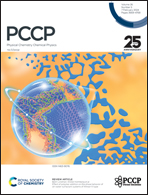Fast and accurate excited states predictions: machine learning and diabatization†
Abstract
The efficiency of machine learning algorithms for electronically excited states is far behind ground-state applications. One of the underlying problems is the insufficient smoothness of the fitted potential energy surfaces and other properties in the vicinity of state crossings and conical intersections, which is a prerequisite for an efficient regression. Smooth surfaces can be obtained by switching to the diabatic basis. However, diabatization itself is still an outstanding problem. We overcome these limitations by solving both problems at once. We use a machine learning approach combining clustering and regression techniques to correct for the deficiencies of property-based diabatization which, in return, provides us with smooth surfaces that can be easily fitted. Our approach extends the applicability of property-based diabatization to multidimensional systems. We utilize the proposed diabatization scheme to achieve higher prediction accuracy for adiabatic states and we show its performance by reconstructing global potential energy surfaces of excited states of nitrosyl fluoride and formaldehyde. While the proposed methodology is independent of the specific property-based diabatization and regression algorithm, we show its performance for kernel ridge regression and a very simple diabatization based on transition multipoles. Compared to most other algorithms based on machine learning, our approach needs only a small amount of training data.



 Please wait while we load your content...
Please wait while we load your content...